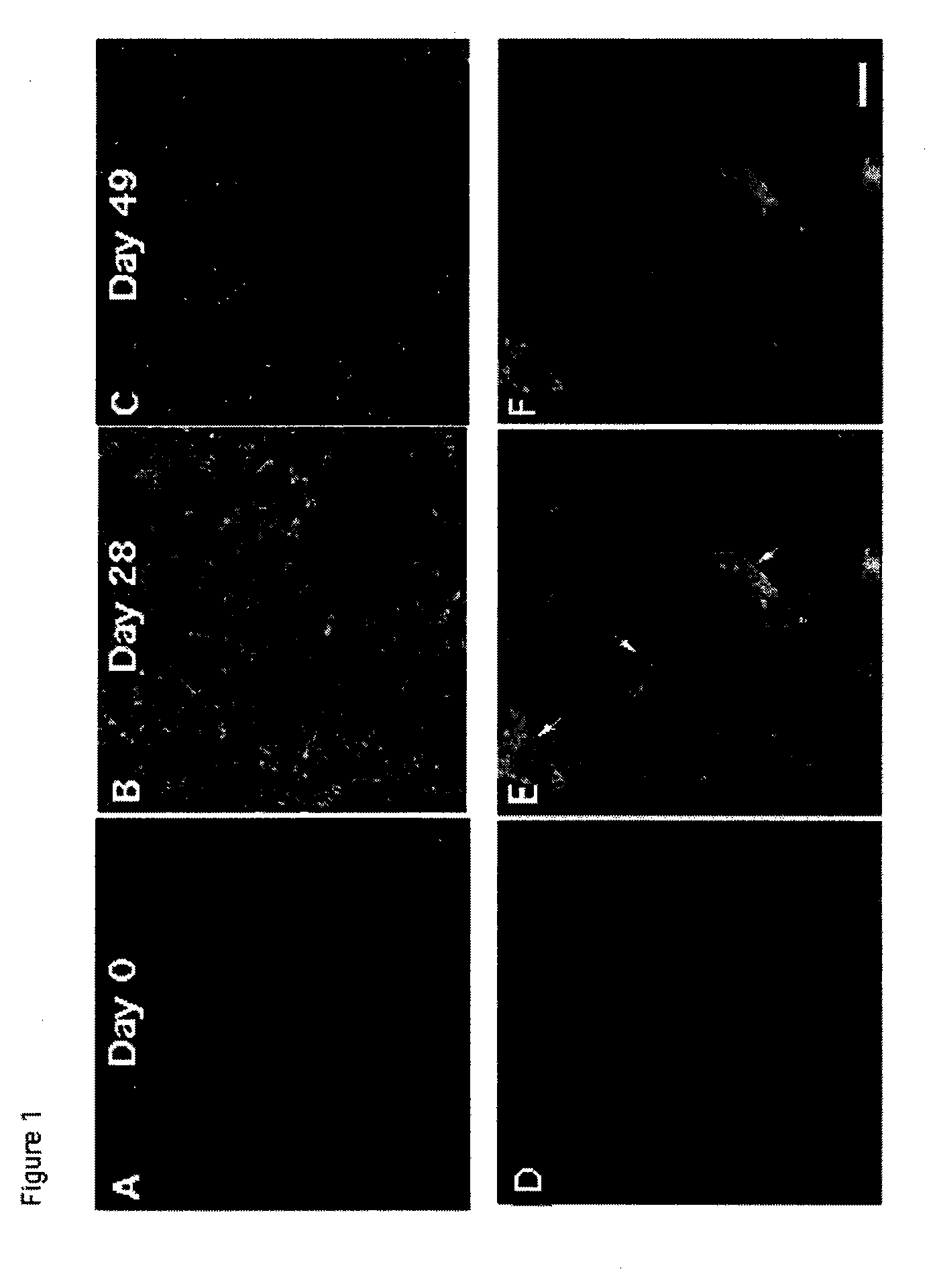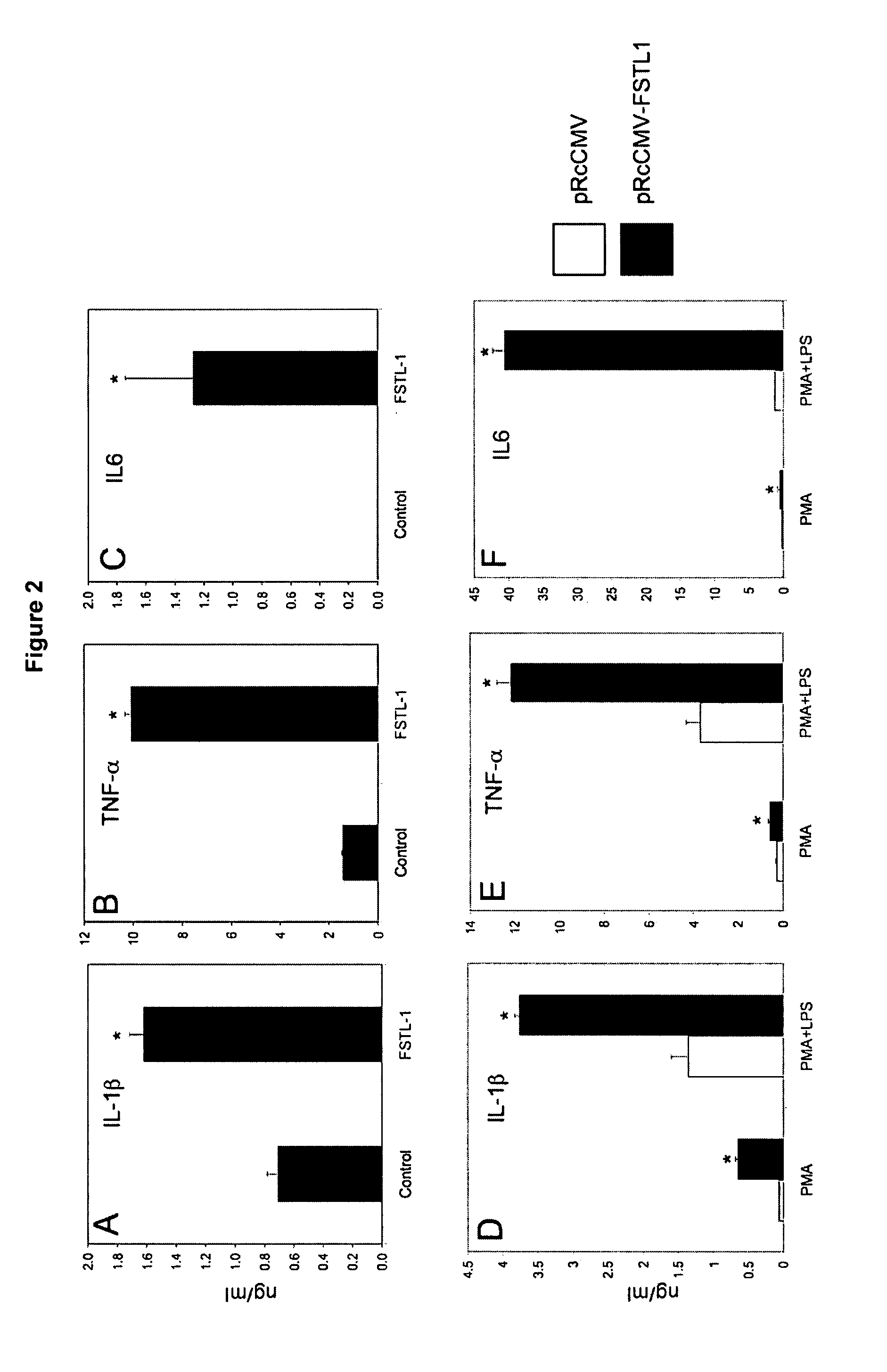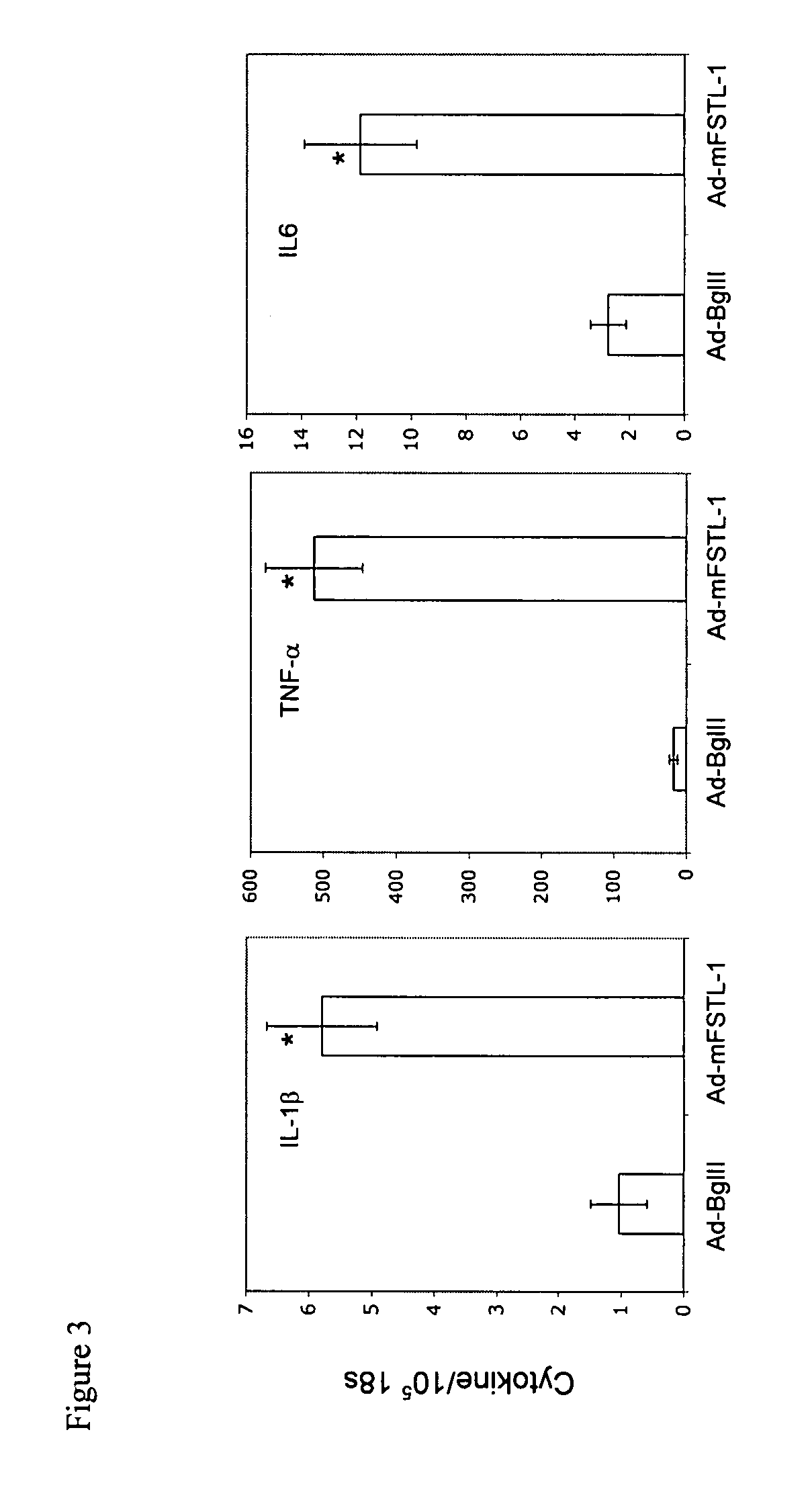Immunomodulation of inflammatory conditions utilizing Follistatin-like protein-1 and agents that bind thereto
a technology of follistatin and inflammatory conditions, applied in the field of immunomodulation of inflammatory conditions, to achieve the effects of reducing the proinflammatory effect of fstl-1, increasing the expression of proinflammatory cytokines, and decreasing the induction of th17 cells
- Summary
- Abstract
- Description
- Claims
- Application Information
AI Technical Summary
Benefits of technology
Problems solved by technology
Method used
Image
Examples
example 1
Methods and Materials
Adenoviral Vectors
[0078]A recombinant, E1a-E3-deleted replication defective adenovirus type 5 (Ad5) vector encoding the mouse FSTL-1 gene (NCBI Nucleotide database accession number BC028921) was generated through Cre-lox recombination as described by Hardy et. al. S. Hardy et al., Journal of Virology 71: 1842 (1997). The control vector, Ad-BglII, is an E1a / E3-deleted replication-defective adenovirus type 5 lacking an insert. The vectors were grown in 293 cells and purified by CsCl gradient ultracentrifugation, dialyzed at 4° C. against sterile virus buffer, aliquoted, and stored at −80° C. FSTL-1 expression was verified by both RT-PCR and western blot from infected COS-7 cells.
[0079]U937 cells were electroporated with pRcCMV-hFSTL-1 using a BioRad Gene Pulser (BioRad, Hercules Calif.) according to the manufacturer's protocol. Cells were maintained in G418 selection media for a period of 3-4 weeks and clones were isolated.
Purification of FSTL-1
[0...
example 2
The Role of FSTL-1 in Arthritis
[0085]The cellular distribution of FSTL-1 in the joints of mice was examined by immunohistochemistry at various times during the course of arthritis (FIG. 1). Mouse knee joints were harvested from mice prior to immunization with type II collagen (day 0), during acute arthritis (day 28), or during late arthritis (day 49). Tissues were sectioned and stained for FSTL-1 and observed under a confocal microscope at 40× (panels A-C). Higher magnification (100×) views of day 28 synovium show CD90+ fibroblasts in red (D), FSTL-1 in green (F) and co-localization of FSTL-1 with fibroblasts, indicated by the arrows (E).
[0086]An increase in expression was observed in early CIA (day 28) whereas only minimal expression was observed in late CIA (day 49). The expression of FSTL-1 was shown to be localized to fibroblasts, as evidenced by CD-90 staining. No expression was observed in macrophages, neutrophils, or T cells.
example 3
FSTL-1 Induces Secretion of Proinflammatory Cytokines from Fibroblasts and Macrophages
[0087]Arthritic synovium contains large numbers of fibroblasts and macrophages that are centrally involved in joint destruction. After demonstrating that fibroblast-like synoviocytes over-expressed FSTL-1 during acute arthritis, the downstream effects of such overexpression on this cell phenotype were examined. Although unsuccessful at transfecting primary mouse or human synovial fibroblasts, the monkey kidney fibroblast cell line, COS-7, was stably transfected by electroporation.
[0088]FIG. 2 shows the results of experiments where monkey COS-7 fibroblasts were stably transfected by electroporation with a plasmid (pRcCMV) encoding the neomycin resistance gene with or without human FSTL-1. After selection for 4 weeks, RNA was extracted and assayed for IL-6 by real time PCR (A). Human U937 monocyte cells U937 cells were similarly transfected. After selection for 4 weeks, cells were stimulated with 10 ...
PUM
| Property | Measurement | Unit |
|---|---|---|
| pH | aaaaa | aaaaa |
| concentration | aaaaa | aaaaa |
| real time PCR | aaaaa | aaaaa |
Abstract
Description
Claims
Application Information
 Login to View More
Login to View More - R&D
- Intellectual Property
- Life Sciences
- Materials
- Tech Scout
- Unparalleled Data Quality
- Higher Quality Content
- 60% Fewer Hallucinations
Browse by: Latest US Patents, China's latest patents, Technical Efficacy Thesaurus, Application Domain, Technology Topic, Popular Technical Reports.
© 2025 PatSnap. All rights reserved.Legal|Privacy policy|Modern Slavery Act Transparency Statement|Sitemap|About US| Contact US: help@patsnap.com



